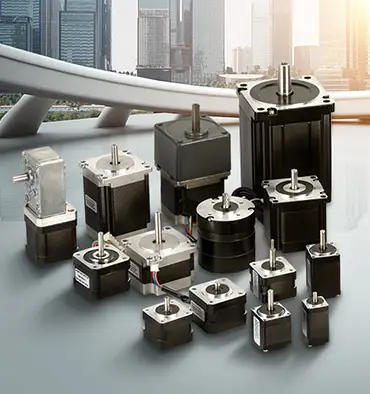How to calculate pulse rate of stepper motor?
The pulse rate of a stepper motor is an important parameter that determines the speed and precision of the motor. The pulse rate, also known as the step rate or frequency, is the number of pulses that are sent to the motor per second in order to control its movement. In this article, we will go over the steps for calculating the pulse rate of a stepper motor.
What is Pulse Rate?
Pulse rate, also known as step rate or frequency, is the number of pulses that are sent to a stepper motor per second in order to control its movement. The pulse rate determines the speed of the motor, as well as the precision of its movement. A higher pulse rate will result in a faster motor speed and greater precision, while a lower pulse rate will result in a slower motor speed and lower precision.
Why is Pulse Rate Important?
Pulse rate is an important parameter to consider when selecting a stepper motor for a given application. The pulse rate determines the speed and precision of the motor, and is therefore an important factor in determining the suitability of the motor for a particular application.
In general, applications that require high precision and slow speed will require a lower pulse rate, while applications that require fast speed and less precision will require a higher pulse rate. For example, a stepper motor with a low pulse rate may be suitable for use in a CNC machine, where precision is important but speed is not a critical factor. On the other hand, a step motor with a high pulse rate may be suitable for use in a robotics application, where speed is important but precision is not as critical.
How to Calculate Pulse Rate
To calculate the pulse rate of a stepper motor, you will need to know the following parameters:
- The number of steps per revolution of the motor (S)
- The maximum speed of the motor (V)
Once you have these parameters, you can use the following equation to calculate the pulse rate of the motor:
Pulse Rate (F) = S * V
Where S is the number of steps per revolution and V is the maximum speed of the motor.
For example, let's say that we have a stepper motor with 200 steps per revolution and a maximum speed of 10 revolutions per minute. Using the equation above, we can calculate the pulse rate of the motor as follows:
Pulse Rate (F) = 200 * 10 = 2000 pulses per minute
Factors that Affect Pulse Rate
There are several factors that can affect the pulse rate of a stepper motor, including the number of steps per revolution and the maximum speed of the motor. In general, increasing either of these parameters will result in a higher pulse rate, while decreasing them will result in a lower pulse rate.
One important factor to consider is the relationship between the number of steps per revolution and the maximum speed of the motor. The pulse rate of a stepper motor is directly proportional to the number of steps per revolution and the maximum speed of the motor. This means that, other things being equal, a motor with a higher number of steps per revolution and a higher maximum speed will have a higher pulse rate than a motor with a lower number of steps per revolution and a lower maximum speed.
Conclusion
The pulse rate of a stepper motor is an important parameter that determines the speed and precision of the motor. By calculating the pulse rate, you can determine the suitability of a stepper motor for a given application. To calculate the pulse rate, you will need to know the number of steps per revolution and the maximum speed of the motor.


Leave a Reply